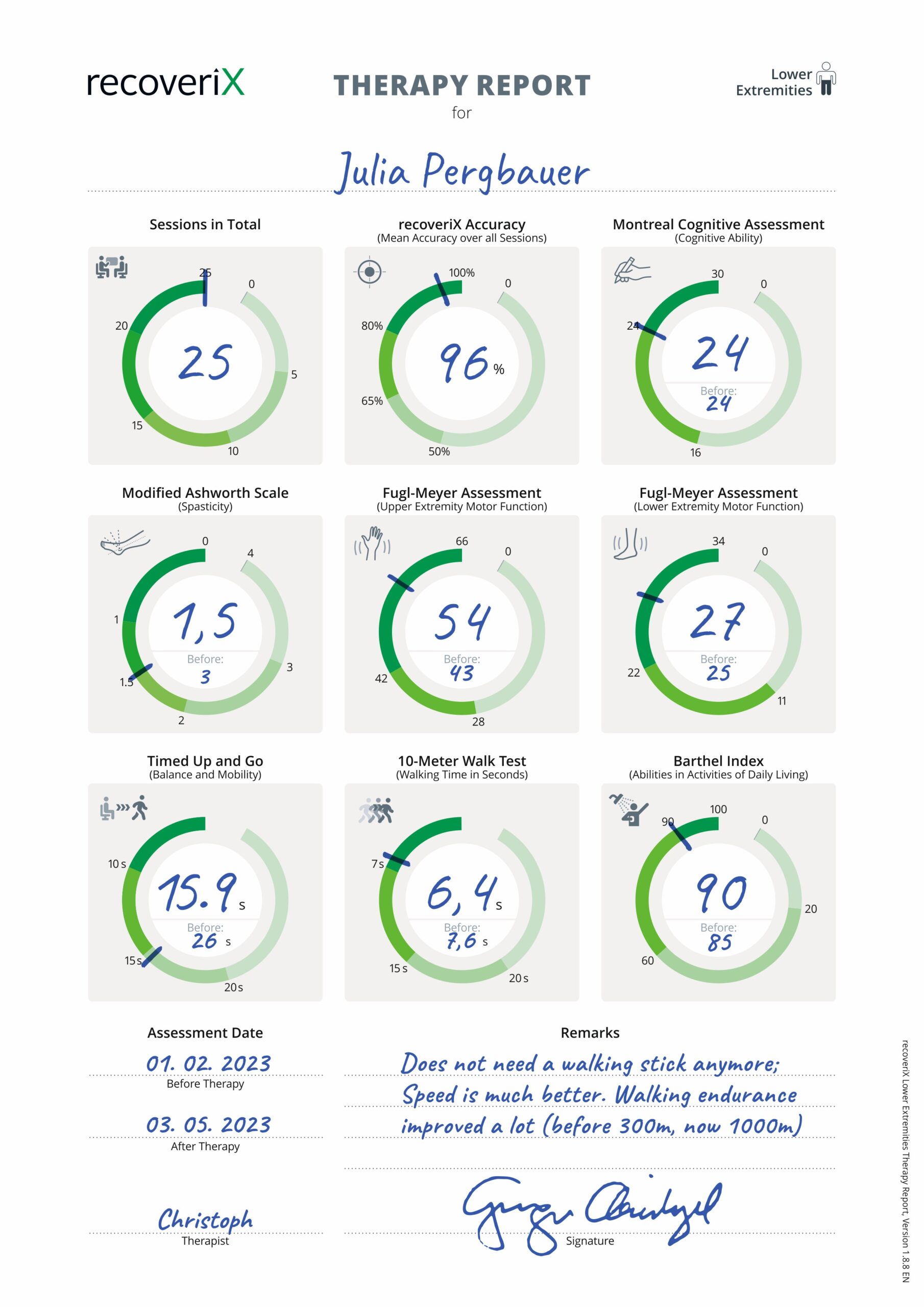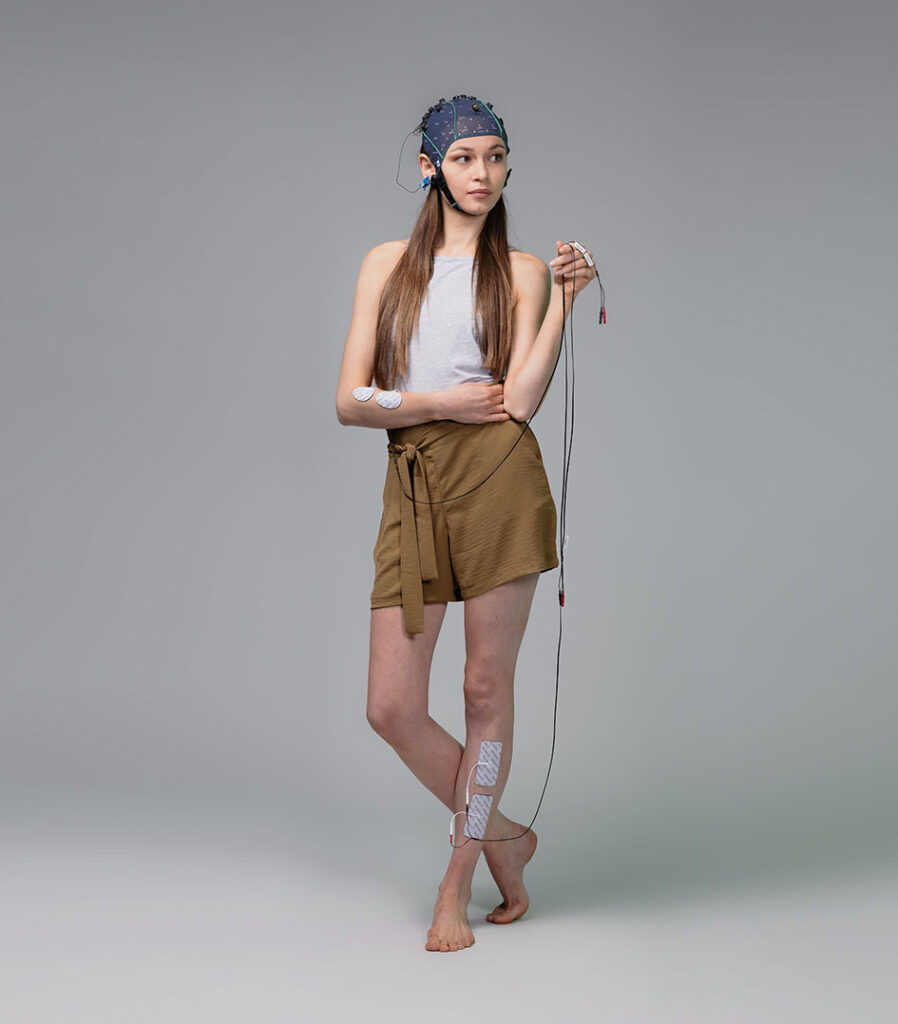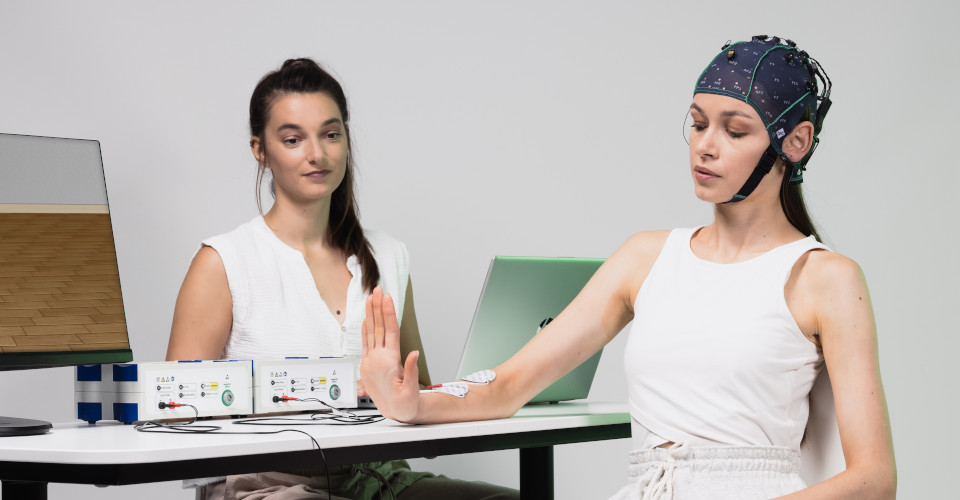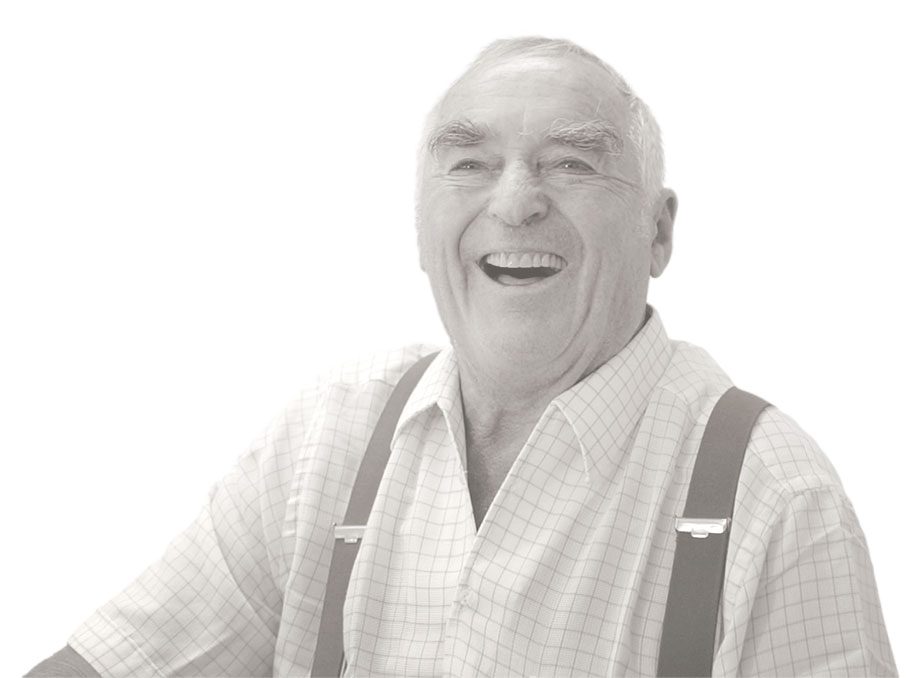Optimize Upper & Lower Extremities
recoveriX is measuring EEG activity while a patient imagines a hand or foot movements. Once recoveriX detects a motor imagination, it triggers a functional electrical stimulation of the limb so that the limb performs a real movement. Patients love that – especially if they were paralyzed for a few years. This procedure is repeated 6000 times and connects cognitive functions with motor behavior. Due to the amount of repetitions, neurons are forming new connections to relearn the movement. A recoveriX patient has to undergo 25 sessions, each lasting for about 45 minutes, ideally 2-3 times per week.
The recoveriX hand therapy treats the left and right hand and arm functions and leads to a reduced spasticity and better fine and gross motoric skills. The recoveriX foot therapy treats the paretic foot and the hand and arm, and also helps to reduce spasticity which leads to better fine and gross motoric skills in the leg and foot.
Fine Motor Skills
This is a patient with subacute stroke. The progress made after 25 recoveriX sessions is remarkable, but what’s even more astonishing is that the improvement doesn’t stop there. After 50 therapies, the patient witnessed an almost healthy hand movement!
Gross Motor Skills
This patient started recoveriX therapy 2 years post-stroke. Left side of the video shows the patient before recoveriX therapy; the right side of the video shows her after recoveriX therapy. The patient had difficulty in doing specific movements with the affected hand. After the therapy, she reported that she is now able to make her own pony tail while standing!
- Box and Blocks Test: Before recoveriX: 21 blocks. After recoveriX: 39 blocks.
- Nine-hole Peg Test: Before recoveriX: 2:35 minutes; After recoveriX: 1:04 minutes.
- Manual dexterity improved in over 85%, and finger dexterity in 142%.
- Spasticity: Significantly reduced leading to extended movement of the affected hand.
Walk & Gait Pattern
This patient started recoveriX 4 years post-stroke. Prior to recoveriX therapy, he had to fixate the handrail with both hands. He may now ascend and descend stairs without clinging to the handrail. He can even carry suitcases in each hand while climbing the stairs. After recoveriX treatment, his left hemisphere displays much greater activation over the sensorimotor cortex.
- Timed Up and Go Test: Before: 14; After recoveriX: 11 seconds.
- 10 Meter Walking Test: Before: 9; After recoveriX 6 seconds.
- Fugl Meyer Upper Extremity: Before: 14 points; After recoveriX: 21 points. He has a wider range of motion in both ankle rotation and ankle flexion.
Walking Speed & Complex Movements
In 25 sessions, the patient’s recoveriX accuracy was 96%. This patient started recoveriX therapy 4 years post-stroke. She claimed that although she could only walk 300 meters before recoveriX treatment, she can now walk 1000 meters. She used a rollator prior to recoveriX, but now that she is so confident that she doesn’t even use a walking stick anymore. Her ability to focus also became better.
- Spasticity decreased from 3 to 1.5 points
- Upper Extremity Fugl-Meyer improved from 43 to 54 points
- Lower Extremity Fugl-Meyer improved from 25 to 27 points
- Timed Up and Go Test improved from 26 to 15.9 seconds
- 10-Meter Walk Test improved from 7.6 to 6.4 seconds
- Barthel Index improved from 85 to 90 points
More significantly, the patient’s walking speed and endurance have both increased and she no longer requires a walking stick. The patient is doing substantially better. The video contains a lot of amazing improvements:
- She is now so confident that she no longer needs her walking stick
- The posture of her entire body appears healthier
- She stands up and sits down more quickly
- She walks more quickly
- She looks healthy when she is sitting
- The tremor in her paretic hand has decreased
Objective Measures
Patients adore tangible outcomes. In order to properly determine improvements, g.tec performs a number of tests both before and after the therapy.

This is a patient’s therapy report demonstrating the positive motor improvements before and after recoveriX treatment.
- Spasticity
- Upper Extremity Fugl-Meyer
- Lower Extremity Fugl-Meyer
- Timed Up and Go Test
- 10-Meter Walk Test
- Barthel Index
Upper extremity training followed by lower extremity training
In our recent publication, we are showcasing the remarkable efficacy of a combined upper and lower limb therapy approach for recoveriX patients. The study, comprising 25 sessions of upper limb therapy followed by 25 sessions of lower limb therapy, demonstrated significant improvements across multiple measures.
Following the initial upper limb therapy sessions, patients experienced highly significant enhancements in Fugl-Meyer Assessment for Upper Extremity (FMA-UE) scores, Barthel Index for activities of daily living, and Modified Ashworth Scale (MAS) for wrist and finger spasticity (p<0.001).
Continuing with an additional 25 sessions of foot therapy, patients showed further substantial improvements, including highly significant enhancements in the 10-meter walking test, FMA-UE scores, and Timed Up and Go test (p<0.001). Additionally, there were notable advancements in Barthel Index scores and reductions in spasticity.
This combined therapeutic approach not only enhances fine and gross motor skills but also significantly improves gait and balance. Importantly, the positive effects of treatment extend beyond the initial 25 sessions, offering sustained hope to patients.






